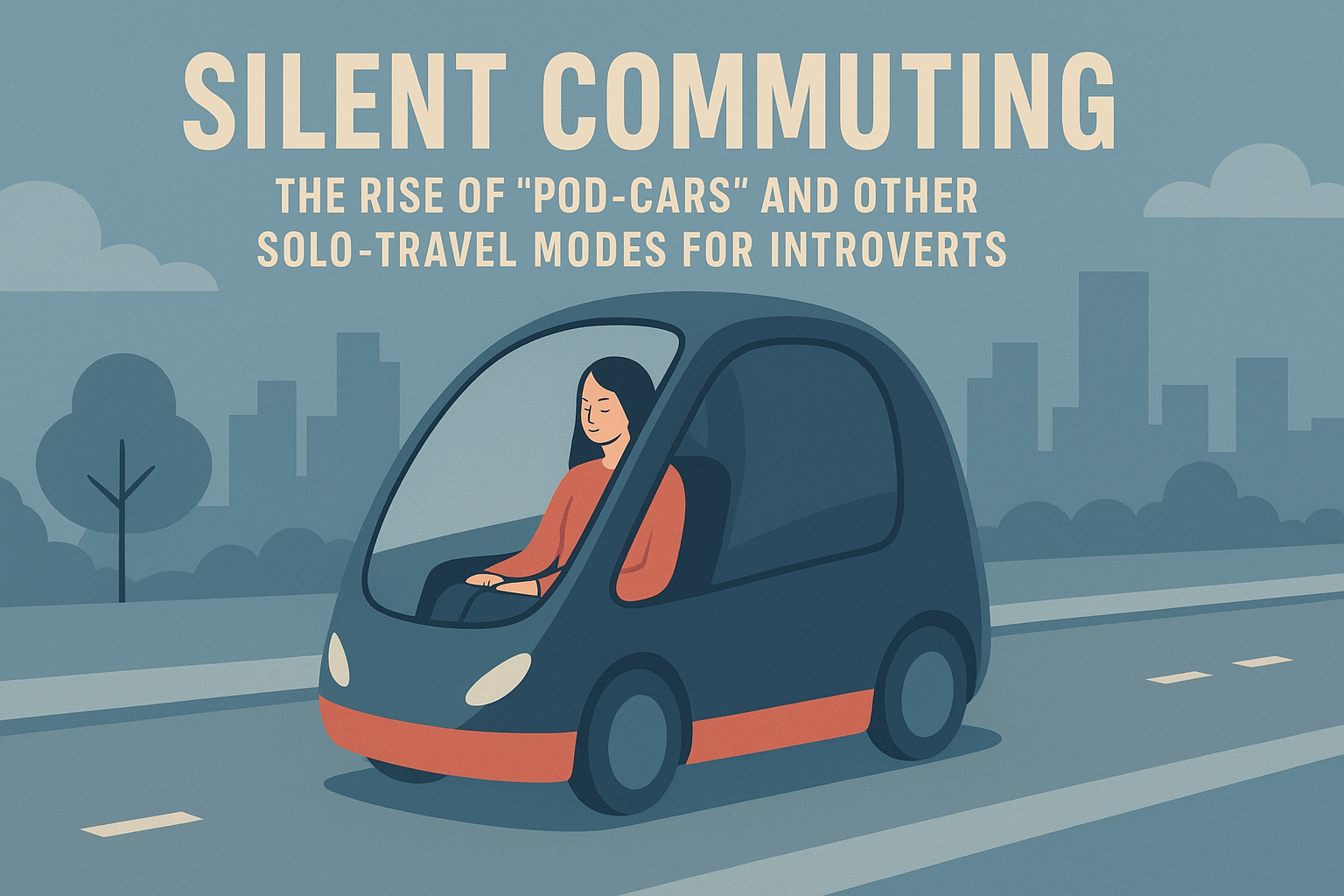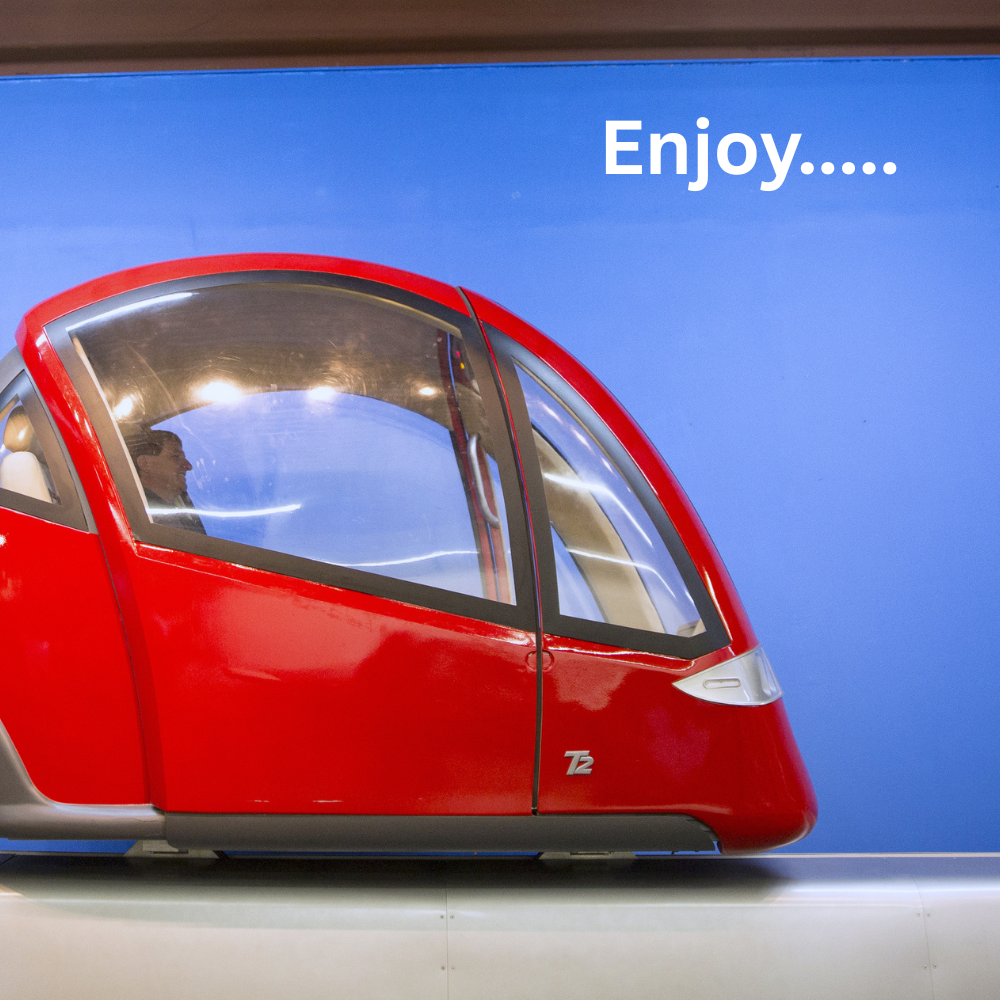Silent commuting: The rise of “pod-cars” and other solo-travel modes for introverts
Introduction
In an environment that is increasingly louder — whether on the subway during rush hour with announcements and crowded cars or simply endless notifications or messages — there is a desire for silence, even while moving. Welcome to the era of “silent commuting," where pod-cars and different forms of independent travel are changing the way we travel from spot to stop. For many, particularly introverts, traveling alone in quiet, individualized vehicles creates a state of peace. Travel is not only convenient but is a form of calm. It’s not only travel, there’s no one talking with volume, there is no distractions, it’s simply you the road and, at least, an instant of calm in motion.

The Case for Quiet: How Noise Fatigue Is Reshaping Travel
Our lives today barely stop the chatter. From honking horns to jam-packed metro trains, our daily journeys have become a cacophony of noise that consumes more energy than we realize. Many people, especially introverts, are at their breaking point — needing just a few moments of quiet before or after the long day. Noise fatigue is not just about the sound; it is about never having the mental space to think. As noise fatigue becomes normalized, travelers are turning to other alternatives that provide peace and solitude. Silent travel is not about eliminating people; it’s about protecting one’s mental space. Whether it is because they are traveling alone in an electric vehicle, they will wear noise-canceling headphones, or because they enjoy solo travel — the trend is unmistakable: people are done with the chaos on wheels. The future of commuting will look quieter, slower, and more intentional, where silence will be the new luxury.
Understanding Pod-Cars and Personal Mobility Pods
Pod-cars may sound alien or imaginary, but they’re on the streets right now. To call these small, one-person, electric vehicles a pod-car is actually describing them rather than presenting an alter-society. Designed for efficacy, privacy, and calm, they, in no particular order (or form), are battery-powered, eco-friendly, and made safe with integrated smart sensors; often with self-driving capabilities and well-designed yet minimal interiors – everything you need to get you on your way, nothing more. When you ride in a pod, it’s like being transported in your own little bubble, away from the road noise, traffic, and crowds with – soft music or silence.
Pod-cars are also indeed a testament to how technology is evolving not only to satisfy our emotional necessities – escaping today’s social standards – versus the functional necessities of “grocery getting,” and so forth. You don’t have to be excessively wealthy or exclusive to rejoice in mobility; your ability to have a little balance in this world is more than extravagant. The movement to share flux in quiet motion is due in part to the fact that people are attracted to the interaction of commuting without the complications of being bombarded with traffic or constantly interacting socially.
Major urban planning around the world is now more welcoming to smaller, greener vehicles – off-road, pod-cars, alike – and cities of high-density populations are reducing regulations for small mobility cars. Pod-cars are a large portion of the sustainable business transportation model and it needs to continue spreading. It’s valued in so many ways for its unique and enjoyable ability to juxtapose sustainability, simplicity, and solitude.

Solitude on the Move: The Emotional Benefit of Traveling by Yourself
There is something profoundly healing about moving through the world on your own. No small talk, no shared playlists, no expectations to perform — simply you and your own thoughts. Solo traveling is becoming a quiet act of rebellion against overstimulation. For introverts, it becomes a safe space to recharge, and for everyone else, it develops as mindfulness in movement. The experience of traveling through the world with no sound allows the brain to breathe, to wander, and ultimately reset before entering the ensuing hustle and bustle of our next space. It is not loneliness, it is peace. Silent travel transforms daily commutes into surrogate mini-retreats, allowing people to balance their constant connectivity with their need for isolation. Traveling on your own – either in a pod-car floating along morning streets or riding your bike while listening to your favorite podcast – these moments of peace we all can develop become essential. We are becoming present again in appreciating the emotional comfort of being alone, while continuing to move forward.
The Future of Urban Transport: From Shared Chaos to Personal Calm
Cities have long promoted shared transport — buses, metros, ride-sharing — all in the name of efficiency. But as city life becomes noisier and more congested, a quiet revolution is taking place. The future may not be about getting everybody there at the same time, but letting every person travel peacefully alone. As pod-cars, e-scooters, and micro-cars become more popular, so-called “personal calm commuting” is turning into a reality. City planners are already envisioning narrower roads, charging stations, and green routes for single passengers. It’s a reconsideration of what public space is — not less sociable, just more balanced. Comfort and quiet will be just as important as speed in this new age. The highways of the future may vibrate softly rather than bellow, crowded with people who prefer tranquility to speed — demonstrating that advancement doesn’t necessarily equal noise.
Conclusion
Quiet commuting isn’t merely a transportation fad — it’s a sign of how individuals are redefining tranquility in the course of their daily lives. While cities become more crowded and screens blare, the soft whirring of a pod-car sounds almost therapeutic. It’s about reclaiming snippets of quietude in the middle of a world that never sleeps. The future of travel may not be more rapid or more dazzling — it may just be quieter, more peaceful, and more human.
